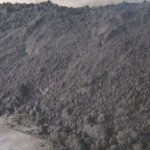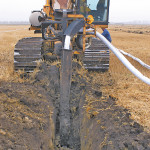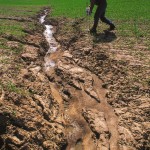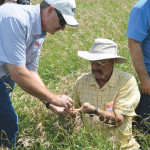
Tag Archives Manure

Sewage sludge could fertilize crops
Researchers in Madagascar think the environmental benefits of recycling phosphorus can’t be ignored

Antibiotics manure risk requires a rethink
Manitoba researchers say previous studies ignore the interplay of animals’ digestive systems on the drugs

Manitoba Pork recognizes industry participants at AGM
Steve’s Livestock Transport and manure management specialist Scott Dick were singled out for ongoing contributions to pork sector’s success

Manure separation could be key to P accumulation issue
Removing phosphorus-rich solids from nitrogen-rich liquid allows both local use and economical transportation to other farms

Mix it up for phosphorus’s sake
Some producers have found innovative ways to balance phosphorus levels, including land swapping

Literature review for research on manured, tile-drained land being sought
Manitoba Livestock Manure Management Initiative Inc. wants to see what scientists have already discovered and consider how it might fit under Manitoba conditions

Developing a sustainable model for intensive agriculture
U.K. scientists warn on soil loss and call for biotech ‘to wean crops off the artificial world we have created for them’

Manitoba extends fertilizing deadline to Saturday

Clues to soil health lie in the patties

Winter no barrier to composting
Manure composting has many benefits, including concentrated nutrients, reduced volume, no smell and easy transport


